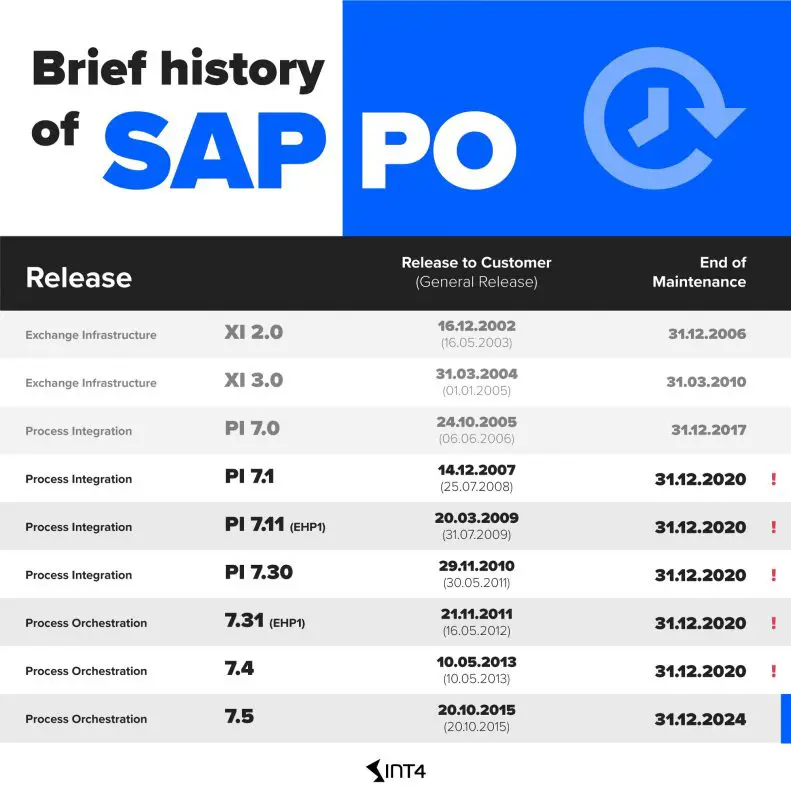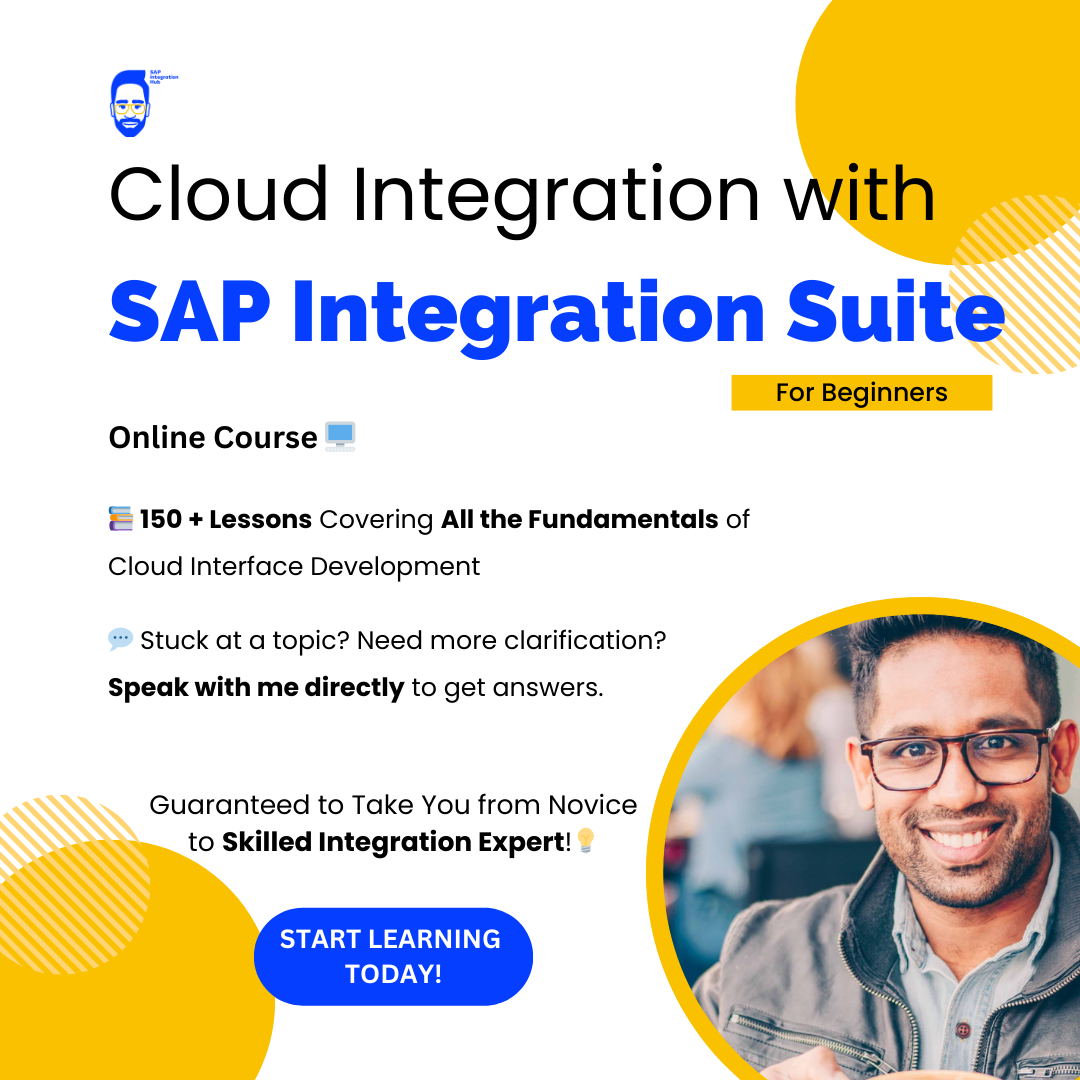SAP Cloud Platform Integration (CPI) is SAP’s answer to having cloud middleware software. SAP Process Orchestration (PO), which is the on-premise middleware solution from SAP, has more than 12.000 productive licenses and it’s being used by the biggest SAP customers worldwide.
A few years back, SAP decided to become a cloud software company, and one of the things it needed to have was a full-blown cloud middleware. This time, SAP decided not to build the middleware from scratch as it did with SAP PO, but reuse the existing Apache Camel foundation and just adapt it to the SAP landscapes. Since then SAP started a very slow process of helping some customers to move to the new cloud middleware – SAP CPI.
Advantages of Upgrading to CPI from PO
There are many reasons why you’d want to consider moving into the cloud with your SAP middleware and some of those are:
Support Ending for SAP PO Versions
By the end of 2020, all customers need to use SAP PO 7.5 as all previous versions are being sunset in terms of support.

Support for Every Growing Cloud-Based System Integration
There are many new systems in the cloud (like S/4HANA Cloud) that communicate with other cloud-based systems. Why would you want to use on-prem middleware in those cases?
CPI’s Message Volume-Based License Model
SAP license of SAP PO (core-based) is different than SAP CPI (message-based) so from the volume perspective, it may be worth using a different model, especially for the small customers.
You can find more information about this on the official SAP page – How can you license SAP Cloud Platform
Trouble-free System Maintenance
As for Technical ownership, with SAP CPI you don’t need to own the hardware you just buy service so it’s much easier to maintain compared to on-premise SAP PO.
Drawbacks of Migrating to CPI
There are also some reasons why you may want to rethink your SAP CPI migration:
Complexity of Migration
SAP CPI does not have multiple standard options of SAP PO (more on that in the later parts of this article) so it’s not an easy migration – you will need to redesign a lot of things if your SAP PO landscape is big.
To find out more about the complexities of upgrading to CPI, go to our article on lessons learned from the previous PO to CPI migration projects.
SAP PO Support Extended Until 2030
SAP PO will be supported for the next decade (2027 standard support and 2030 extended maintenance) so there’s no rush in doing the migration.
Limitations of CPI in Supporting On-Premise Integrations
SAP is promoting a new version of its integration methodology – New version of the SAP Integration Solution Advisory Methodology Template released – where SAP clearly mentions that SAP CPI should only be used for the cloud-to-cloud connectivity and on-premise should remain with SAP PO
Regional Restrictions in Using Data on Internet
Sometimes, it’s not even possible to use cloud middleware like SAP CPI (country restrictions on the data on the internet). Some industries don’t allow sensitive data to be moved across the internet so in those cases the only possibility for using SAP CPI would be to have it run on the On-Premise SAP PO runtime – as shown here.
Lack of CPI Experts
From the developer’s perspective, SAP PO developers with many years of experience are pretty easy to find, while SAP CPI developers are much more difficult to find. Many of them lack the real (3-5 projects) experience so your project may be treated as a learning ground for them.
Lessons Learned from PO to CPI Migration Projects
These are the key lessons learned from our experience in previously concluded PO to CPI migration projects.
- Lack of automated migration option
- No central repository for data types
- Limitations in mapping compatibility between PO and CPI
- Need for manual activity when migrating enhanced receiver determination scenarios
- Limitations in CPI for payload logging
- Lack of payload-based message monitoring capabilities in CPI
- Constraints in staring and stopping communication channels
- Obstacles in handling iDoc acknowledgments
- Lack of adapters like CIDX, RNIF, BC, File
If you like to read more about the lessons learned in detail, visit the article in SCN or check out the webinar.
Important Factors to Consider when Planning a PO to CPI Migration Project
Migration to SAP CPI cannot be only viewed from the development perspective. There are at least two more from the operations point of view:
Enabling CPI System Connectivity and System Landscape Preparation
if you move your middleware to the cloud that means that all of the systems need to be able to communicate with SAP CPI which in most cases means tons of work with SAP basis and network teams to help you open correct IPs/ports.
This type of work, in some cases, might mean almost full-time work for a few weeks just making sure that the whole setup is done on all landscapes (development, test, and production). One thing to remember here is that none of those actions are quick, on the contrary, they usually take from days to weeks due to the high risk of security breaches from the internet.
Regression Testing Migrated Interfaces
In most cases, SAP PO to SAP CPI migration projects will be pretty small technical projects with fairly limited budgets. On the other hand, if you move one middleware to another you need to test all of your application interfaces very well.
You can do that in two ways: ask your functional consultants and business users to do tons of testing, which is virtually impossible with the budgets of migration projects or, as an alternative, you can use a Test Driven Development (TDD) where you can just take all of the messages from SAP PO (production landscape) and run them via SAP CPI (development or test).
This kind of testing approach is possible with the only SAP native tool for testing SAP application interfaces – Int4 IFTT. You can learn about it on the openSAP course “Virtualize and Automate Your SAP Testing Using Int4 IFTT” Week 3 – Unit 3: SAP PI/PO to SAP CPI Migrations.
Do you have experience in migrating from PO to CPI? What are your thoughts on the topics we discussed in this article about the advantages, disadvantages, and practical lessons learned?
Please leave a comment below with your feedback and questions.

Thank you for this comprehensive and insightful guide on SAP PO to CPI migration. It’s incredibly helpful, well-structured, and makes complex processes easy to understand.